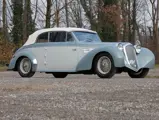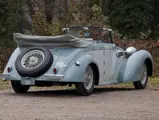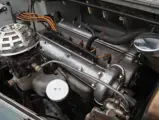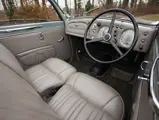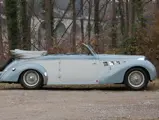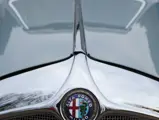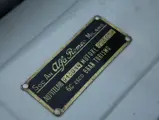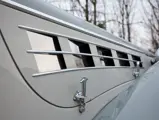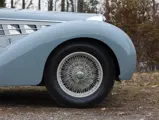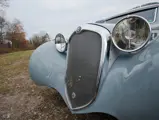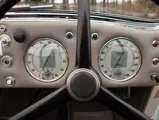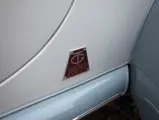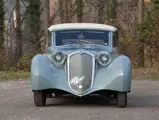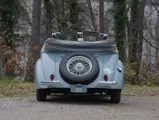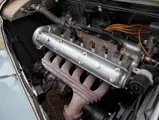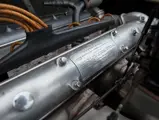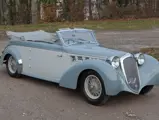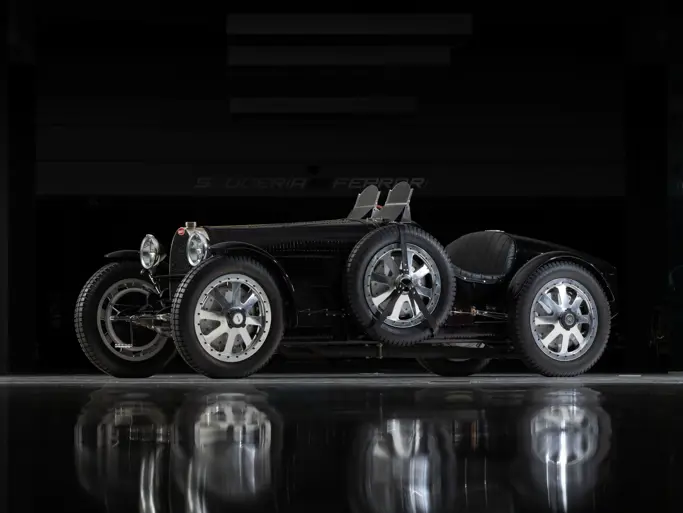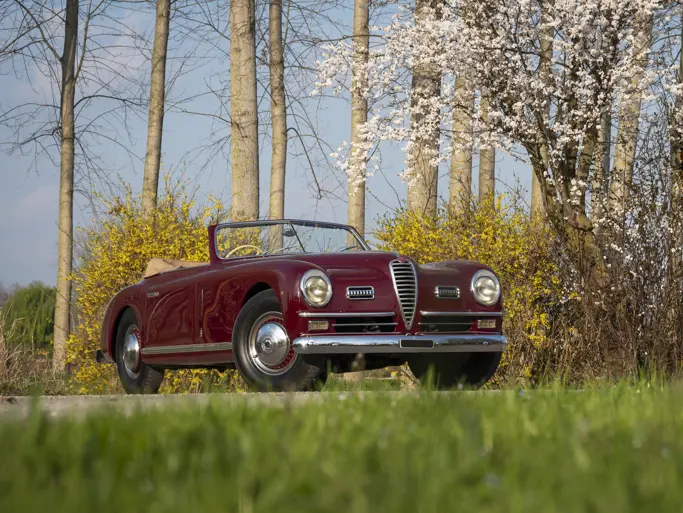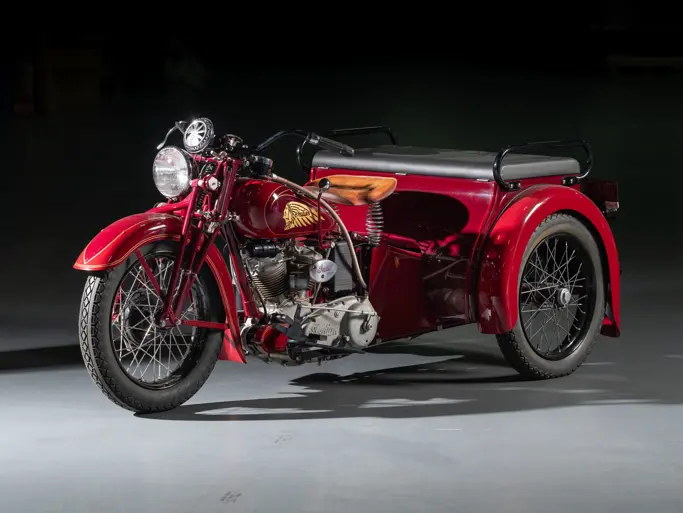Paris 2014
1939 Alfa Romeo 6C 2500 Cabriolet by Gebrüder Tüscher of Zurich
{{lr.item.text}}
€296,800 EUR | Sold
 | Paris, France
| Paris, France
{{internetCurrentBid}}
{{internetTimeLeft}}

- Believed to be the earliest surviving 6C 2500
- The only 6C 2500 with coachwork by Gebrüder Tüscher
- Original engine, body, and chassis
- Italian engineering wrapped in fine Swiss craftsmanship
- Sans doute une des plus anciennes survivantes de 6C 2500
- La seule 6C 2500 équipée d'une carrosserie Gebrüder Tüscher
- Moteur, carrosserie et châssis d'origine
- Technique italienne habillée avec la qualité de l'artisanat Suisse
90 bhp, 2,443 cc double overhead-camshaft inline six-cylinder engine, four-speed manual synchromesh transmission, four-wheel independent suspension with coil springs in the front and swing axles in the rear, and four-wheel drum brakes. Wheelbase: 3,250 mm
Moteur six-cylindres en ligne, 2 443 cm3, 90 ch, deux ACT, boîte manuelle quatre rapports synchronisés, roues indépendantes avec ressorts hélicoïdaux à l'avant et essieu brisé à l'arrière, freins à tambours sur les quatre roues. Empattement: 3 250 mm.
Alfa Romeo’s 6C 2500 was developed from the earlier Vittorio Jano-drawn 6C 2300 by Jano’s successor, Bruno Trevisan. The 6C 2500 was introduced in 1939, and it was a superb grand tourer that featured a larger, more powerful engine and more modern coachwork. Its rakish designs carried Alfa Romeo into the post-war era, and it would remain in production for a remarkable 14 years.
Chassis 913.014, offered here, is the fourteenth 6C 2500 chassis produced, and it is believed to be the earliest known survivor. With the 1939 to 1942 Alfa Romeo factory records lost in history, it is invaluable that an earlier owner of this car, Bernie McDonald, studiously researched its history. McDonald was able to confirm, through historian Dr Egon Harris, that the coachwork, with its flowing pontoon wings and long, sleek lines, was built by Gebrüder Tüscher, of Switzerland, for Herr Direktor Weber. It is interesting to note that even though Gebrüder Tüscher served as Alfa Romeo’s Swiss importers during this period, and they dealt with numerous 6C 2500 chassis, this is the only one known with coachwork by their shops.
The car ended up being abandoned in a parking facility near Heathrow Airport, and it was eventually uncovered in the 1960s by a Canadian naval officer. It was totally disassembled for a restoration, which the officer was fated never to accomplish, and then it was acquired from his widow by Mr McDonald. With the help of numerous Alfisti, Mr McDonald was able to restore the car back to its original condition, including returning all body panels to original condition, rebuilding the original engine using properly machined parts, and refinishing the car in an elegant two-tone grey, as it had worn when new.
Following eight years of restoration, the car was awarded Best in Vintage Class and People’s Choice at the Alfa Romeo Owners Club convention in 1997. It was sold four years later, returning to Switzerland, from where it is offered by its present gentleman owner.
This car is amongst the most important surviving 6C 2500s, and it boasts unique coachwork and truly transcontinental style.
L'Alfa Romeo 6C 2500 a été développée à partir de la 6C 2300 de Vittorio Jano par le successeur de ce dernier, Bruno Trevisan. Dévoilée en 1939, c'était une superbe grande routière équipée d'un moteur plus gros et plus puissant, ainsi que d'une carrosserie plus moderne. Elle est restée en production pendant la remarquable durée de 14 ans et son style audacieux a amené Alfa Romeo jusqu'à la période d'après-guerre.
Le châssis 913.014, qui est proposé ici, est le quatorzième châssis 6C 500 produit, et l'on pense qu'il s'agit du plus ancien survivant connu. Les archives Alfa Romeo de 1939 à 1942 ayant disparu, il est donc particulièrement précieux qu'un des anciens propriétaires de cette voiture, Bernie McDonald, ait effectué des recherches approfondies sur son histoire. Ainsi, McDonald a pu confirmer, par le biais de l'historien Dr Egon Harris, que la carrosserie, avec ses ailes élégantes et sa ligne étirée et fluide, a été construite par l'atelier suisse de carrosserie Gebrüder Tüscher, pour Herr Direktor Weber. Il est intéressant de noter que, bien que Gebrüder Tüscher ait joué à cette époque le rôle d'importateur Alfa Romeo, voyant passer bon nombre de châssis 6C 2500, c'est le seul connu équipé d'une carrosserie sortant de leur atelier.
La voiture a terminé à l'abandon dans un parking proche de l'aéroport de Heathrow, près de Londres, et a été découverte dans les années 1960 par un officier de la marine canadienne. Elle a été alors complètement démontée pour une restauration que l'officier n'a pas pu mener à son terme, si bien que la voiture a été ensuite vendue par sa veuve à M. McDonald. Avec l'aide de nombreux Alfisti, ce dernier a réussi à restaurer la voiture dans sa configuration d'origine. Les travaux ont inclus la restauration des panneaux de carrosserie, la reconstruction du moteur en utilisant des pièces correctement usinées, en habillant le tout d'une élégante peinture en deux tons de gris, les mêmes teintes que celles que portait la voiture quand elle était neuve.
Après huit ans de restauration, cette 6C 2500 recevait le Premier Prix de la catégorie Vintage et le Prix du Public lors de la convention de l'Alfa Romeo Owners Club, en 1997. Quatre ans plus tard, elle changeait de mains, revenant en Suisse d'où elle est maintenant proposée par son actuel propriétaire.
Équipée d'une carrosserie unique offrant un style véritablement transcontinental, cette voiture fait partie des 6C 2500 survivantes les plus importantes.

